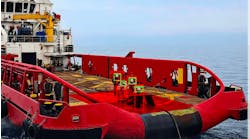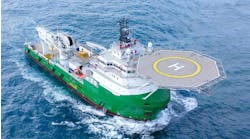Water systems lead expansion of composites into other areas
Fiber-reinforced plastics were introduced in the 1970s as an opportunity to simplify and accelerate construction processes. With their reduced maintenance requirements, it was reasoned, they would also cut costs. But what has happened since? Composites have not made the inroads intended, and the composites industry still finds itself staging conferences explaining how its materials can 'transform' engineering practice.
For the offshore industry, composite materials appeared to offer the claimed strength and weight benefits, but investigations were needed into how widely they could be adopted. Although they had proven their worth on aircraft primary structures, could the same take-up be applied throughout offshore platforms? The practicalities proved more of a challenge than the optimistic materials experts had anticipated. Offshore engineers sought assurances that could not be given. Problems that had to be addressed included:
- No accepted engineering standards
- Most engineers were unfamiliar with the new technology, and had received no formal education on how to use it
- Adopting new technology could jeopardize a development's budget and schedule
- The labor pool had minimal experience working with these materials.
With verification bodies and fabrication yards being equally uncertain, selecting composites risked production delays. So, slower-than-expected acceptance was hardly a surprise.
What about the system design and potential variables? Some form of standard documentation was required, and also testing procedures. Both issues were addressed in the UK by joint industry programs. The most prominent initiatives were the working group set up within the UK Offshore Operators Association (UKOOA) to formulate design standards and the research coordinated by Newcastle University in the Marinetech program to provide scientific evidence of the performance of composite materials. UKOOA's output has since been converted into an ISO document, and with it, the use of composite pipes for water systems offshore has become commonplace.
However, further development has proved problematic. Bonding of composite pipes made installation appear so much easier than the metal alternatives. No longer were expensive welders needed - ease of application meant that laborers from other disciplines, surely, could be trained to fit these pipes. But this was not the reality. Problems during fabrication were reported all too often. Several large projects suffered high failure rates on hydrotesting of the bonded connections.
It transpired that understanding of the variables involved was almost as important as in welding. Institutions such as The Welding Institute took up the challenge of accrediting a training course, and the industry now accepts that use of general laborers for composites, as opposed to skilled technicians, is a false economy.


